Site Search
- resource provided by the Forum Network Knowledgebase.
Search Tip: Search with " " to find exact matches.
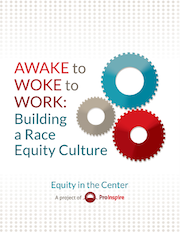
Achieving race equity — the condition where one’s racial identity has no influence on how one fares in society — is a fundamental element of social change across every issue area in the social sector. Yet the structural racism that endures in U.S. society, deeply rooted in our nation’s history and perpetuated through racist policies, practices, attitudes, and cultural messages, prevents us from attaining it. The impact of structural racism is evident not only in societal outcomes, but in the very institutions that seek to positively impact them
In a sector focused on improving social outcomes across a wide range of issues, we need only look within our own organizations to understand why we have not yet achieved the depth of change we seek. Throughout the social sector, there remains a glaring omission of a fundamental element of social impact: race equity. While issue-specific dynamics play an important role in driving social impact (e.g., public policy around affordable housing or the elimination of food deserts to create access to nutritious foods), the thread of structural racism runs through almost every issue faced by the U.S. social sector. Race equity must be centered as a core goal of social impact across the sector in order to achieve our true potential and fulfill our organizational missions.
This “How to Collect and Share DEI Data” guide is a resource for the field and has been written with nonprofits who want to start collecting their organization’s data in mind. The questions and choices of answers have been carefully considered with expert partners – CHANGE Philanthropy, Equity in the Center, and RespectAbility.
The legal staff at the Packard Foundation, Gates Foundation, Hewlett Foundation and Moore Foundation developed this free, first-of-its-kind resource, which covers the basic legal rules around what staff are allowed to fund and engage in at a private foundation.
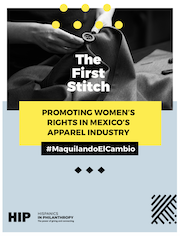
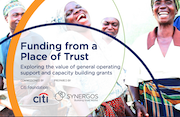
Synergos, a global nonprofit organization that brings people together to solve complex challenges like poverty, published this report that “explores how the provision of general operating support and capacity building can help [funders and] donors improve the impact of nonprofit organizations and in turn the communities they serve.”
Frontline Solutions released the Equity Footprint, a toolkit to help philanthropy assess the impact of a philanthropic organization on communities. The Equity Footprint framework report includes guiding questions in seven different domains to help leaders begin to assess their foundation’s footprint.
The Westfield Foundation proudly announces the recipients of its first quarter 2024 grants underscoring our enduring dedication to community collaboration and sustained support for organizations funded for decades. The foundation's Trustees have greenlit four impactful projects that resonate with our mission and positively affect our youngest to oldest community members.
The Princeton Area Community Foundation has awarded $2.4 million in Community Impact Grants to more than 50 local nonprofits working to address community needs, including education and workforce development, food security homelessness and mental health.
“We are grateful to our nonprofit partners for their tireless commitment to the region’s neighbors and communities,” Nelida Valentin, Community Foundation vice president of Grants and Programs, said. “As we work to deepen our focus on strengthening the philanthropic impact we can make, we hope these grants provide meaningful support and encourage greater collaboration and partnerships, so that everyone can thrive.”
The Burke Foundation and J&J have partnered with the Community Foundation to provide Community Impact Grants, which support local nonprofits to improve the lives of people living in poverty in the Greater Mercer County region. The grants are also funded by generous contributions from local donors who want to make an impact in our region.
The Blacks in Philanthropy Conference, Bridging The Gap: Staying the Course, Rest over Resilience, hosted by the Smith Family Foundation NJ, brings together nonprofit leaders, funders, and changemakers to expand access and drive lasting impact in the philanthropic sector.
Why It Matters
Black communities have long led powerful giving traditions, yet face ongoing barriers to funding and leadership. This conference uplifts Black-led initiatives and redefines what inclusive, impactful philanthropy looks like today.
What to Expect at the Blacks in Philanthropy Conference
◆ Inspiring Keynotes – Hear from influential Black leaders driving change in philanthropy and social impact.
◆ Engaging Panel Discussions – Explore critical topics like wealth-building, access to funding, and community-led solutions.
◆ Workshops & Networking – Gain practical tools, connect with funders, and build partnerships to expand your organization’s reach.
◆ Celebrating Black Philanthropy – Highlighting the power of Black-led giving and its lasting impact on communities.
The Fund for Women and Girls recently celebrated 25 years of impact in the community by awarding $250,000 in grants to local nonprofits that help improve the lives of women and children.
“We are incredibly fortunate to have 25 years of support from our fund members,” Carolyn Sanderson, fund chair, said. “We want to congratulate our grantee partners and thank them for the tremendous impact they make in our communities every day.”
The Princeton-based fund is comprised of members who make individual donations. Then, applying the concept of collective philanthropy, they meet annually to recommend grants to local nonprofits.
These links and materials are presented as guides to help facilitate foundations and government agencies seeking partnerships or engagements to support mutual goals.
Council on Foundations’ Public-Philanthropic Partnership Initiative
Risks and Rewards of Partnerships an article from Let's Talk Philanthropy
The Essentials for Collaboration Between Foundations and Government from the Council on Foundations
What's the right relationship between philanthropy and government? results from a GrantCraft Study
Working with Government: Guidance for Grantmakers a guide from GrantCraft
In the third session of Putting Racism on the Table (2016), Julie Nelson, Director of the Government Alliance on Race & Equity, Haas Institute for a Fair and Inclusive Society, focused on implicit bias. We encourage check out the viewing guide and discussion guide to be used with the video.
Watch the video
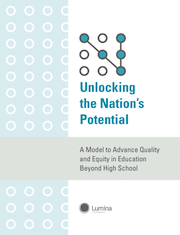
A report from Lumina Foundation and its Quality Credentials Task Force calls for a coordinated national effort to ensure equitable access to quality postsecondary education in the United States.
The report, Unlocking the Nation's Potential: A Model to Advance Quality and Equity in Education Beyond High School (32 pages, PDF), found that the current U.S. system of degrees, certificates, industry certifications, and other credentials lacks a comprehensive definition of quality as well as the kind of up-to-date indicators needed to drive improvements in policies and practices. To help guide efforts that ensure access to high-quality educational opportunities for students of color and advance racially and economically just outcomes, the task force — which includes nearly two dozen education, policy, and workforce development leaders — proposes a model based on a shared understanding of what a quality credential is, as well as institution-based curricular changes and systemic reforms at the federal and state levels.
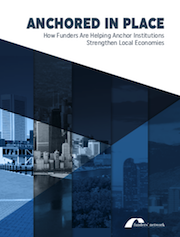
Anchor institutions can play a vital role in strengthening and connecting local economies, and can serve as powerful drivers for building inclusive and equitable communities. This report by the Funders’ Network for Smart Growth and Livable Communities as part of its Anchors Institution Funders’ Group examines the potential these deeply rooted local enterprises hold to create lasting and sustainable change—and illustrates how funders are working with anchor institutions to create healthier, more equitable, and economically vibrant places to live and work.
The report offers recommendations for funders looking to deepen and refine their strategies for working with anchors. In each of the profiled communities—Albuquerque, Baltimore, Chicago, Denver and the Twin Cities—the report shares stories of how funders are extending beyond traditional grantmaking roles to embrace their roles as conveners and leaders in their communities.
